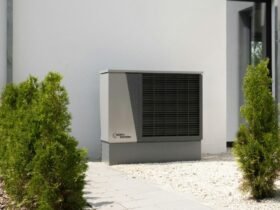As the seasons change, your home requires different levels of care to stay comfortable and efficient. From summer heat waves to winter snowstorms, each season brings unique challenges that can impact everything from your energy bills to the overall condition of your home. Proper seasonal maintenance helps prevent costly repairs, improves energy efficiency, and ensures that your home remains safe and functional year-round.
By taking proactive steps such as checking your heating and cooling systems, reinforcing insulation, and maintaining exterior features, you can protect your home from weather-related wear and tear. Whether you’re preparing for colder months or getting your home ready for warmer days, knowing what to focus on each season makes a big difference.
In this guide, we’ll explore essential maintenance tasks that every homeowner should prioritize to keep their home in top shape. From HVAC preparation to roofing and insulation, here’s what you need to know to get your home ready for seasonal changes.
The Importance of Upgrading Windows for Year-Round Comfort
Windows act as a barrier between your home and the outdoor elements. If they are old, poorly sealed, or inefficient, they can allow heat to escape during winter and let excessive warmth in during summer, making it harder for your HVAC system to maintain a comfortable temperature.
Many homeowners turn to professionals for window replacement in Pittsburgh to upgrade their homes with energy-efficient solutions that combat the region’s cold winters and humid summers. Experienced service providers offer high-performance windows with features like double-pane glass and advanced insulation, helping to reduce drafts, improve indoor comfort, and lower energy costs.
Beyond energy efficiency, upgrading windows can improve home security. Newer models feature stronger materials and improved locking mechanisms, offering better protection against break-ins. Additionally, modern windows enhance curb appeal, increasing the value of your home should you decide to sell in the future. If your windows are difficult to open, show signs of damage, or have condensation between panes, it may be time to invest in replacements before the next seasonal shift.
Preparing Your HVAC System for Seasonal Shifts
Your heating and cooling system plays a vital role in keeping your home comfortable, but without regular maintenance, it can become inefficient and prone to breakdowns. Preparing your HVAC system ahead of seasonal changes helps ensure it runs smoothly when you need it most.
Before winter arrives, schedule a professional furnace inspection to check for worn-out parts, clean air ducts, and replace filters. A well-maintained furnace operates more efficiently, providing consistent warmth without overworking itself.
In the summer months, air conditioners require similar attention. Clean vents, test the cooling system and remove any debris from outdoor units to prevent airflow restrictions. Regular maintenance reduces energy consumption and extends the lifespan of your HVAC system.
Additionally, sealing gaps around doors and windows prevents heat loss in winter and keeps cool air inside during summer. Simple fixes like weatherstripping and caulking can improve insulation and reduce strain on your heating and cooling system.
Insulation and Weatherproofing for Energy Efficiency
Proper insulation is key to maintaining a comfortable home throughout the year. Without adequate insulation, heat can escape in winter, and unwanted warmth can enter during summer, causing your HVAC system to work harder.
Start by checking insulation levels in your attic and walls. If you notice fluctuating indoor temperatures or high energy bills, you may need to add or replace insulation in certain areas. Upgrading to energy-efficient insulation materials can make a significant difference in long-term cost savings.
Weatherproofing is another important aspect of seasonal home preparation. Use caulking or weatherstripping around windows and doors to eliminate drafts and prevent moisture intrusion. If you live in an area prone to extreme cold, insulating exposed pipes can prevent freezing and potential bursts, saving you from costly plumbing repairs.
By improving insulation and sealing gaps, you create a more energy-efficient home that stays comfortable regardless of the season.
Roof and Gutter Maintenance for Changing Seasons
Your roof and gutters provide essential protection against the elements, but they require routine maintenance to remain effective. Seasonal weather can take a toll on your roof, leading to leaks, missing shingles, and structural damage.
Before winter, inspect your roof for any signs of wear, such as cracked or curling shingles. Addressing minor issues early can prevent costly repairs later. If you experience ice dams in colder months, proper insulation and ventilation in your attic can help prevent their formation.
Gutters also play a crucial role in directing water away from your home. Clogged gutters can lead to water buildup, increasing the risk of leaks, foundation damage, and basement flooding. Clean out leaves and debris regularly, especially before heavy rainfall or snowfall. Installing gutter guards can reduce the need for frequent cleaning while keeping water flowing efficiently.
Taking care of your roof and gutters before extreme weather arrives ensures your home stays dry and protected year-round.
Outdoor Preparation: Landscaping and Exterior Care
Seasonal changes impact not only the inside of your home but also its exterior and landscaping. Proper outdoor maintenance helps prevent damage and keeps your home looking well-kept.
Before winter, trim tree branches near your home to reduce the risk of falling limbs during storms. Heavy snow and ice can weigh down branches, causing them to snap and potentially damage your roof, siding, or windows.
If you have outdoor furniture, store it in a dry area or use weatherproof covers to protect it from harsh conditions. It prevents wear and extends the lifespan of your patio furniture.
Checking your home’s exterior walls for cracks or damage before extreme weather sets in is also important. Sealing gaps and repainting weathered surfaces helps prevent moisture intrusion, which can lead to mold growth and structural issues.
By keeping up with outdoor maintenance, you protect your home from seasonal wear and tear while maintaining its overall appearance.
Preparing your home for seasonal changes is a proactive approach that ensures comfort, efficiency, and long-term cost savings. By addressing key areas such as window replacement, HVAC maintenance, insulation, and exterior protection, you create a home that is better equipped to handle fluctuating temperatures.
Simple upgrades like sealing gaps, and maintaining heating and cooling systems can make a significant impact on energy efficiency and indoor comfort. Likewise, roof and gutter maintenance, along with landscaping care, help protect your home from weather-related damage.
Taking these steps not only enhances your home’s performance but also prevents expensive repairs down the line. By staying ahead of seasonal transitions, you create a safe, comfortable, and energy-efficient living space that remains in top condition year-round.













